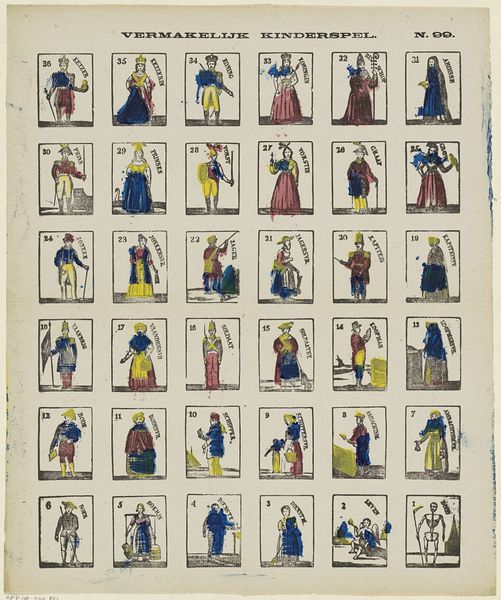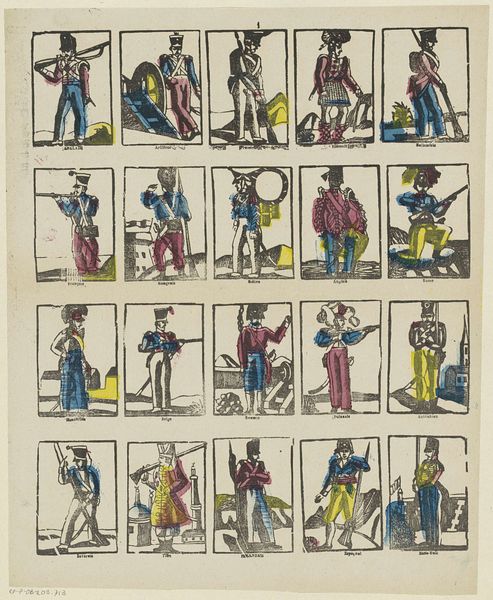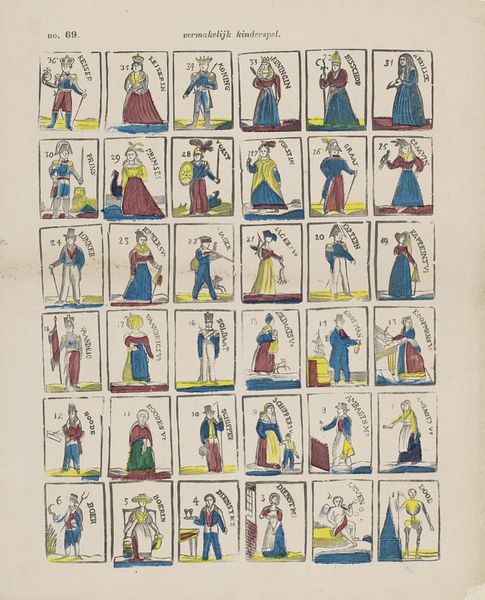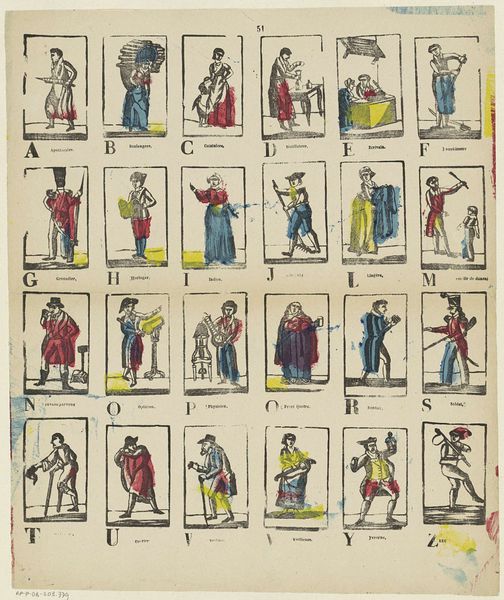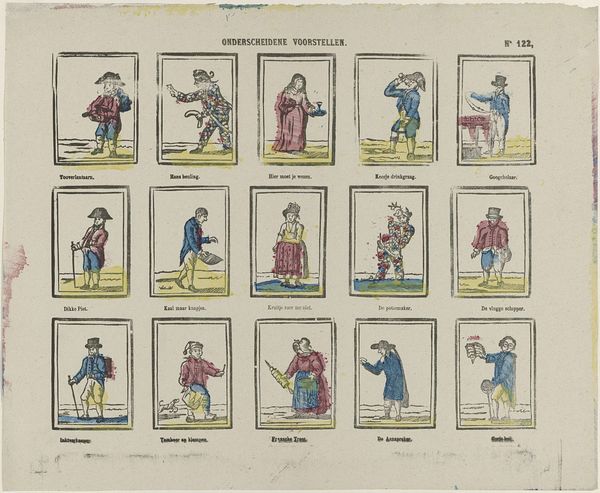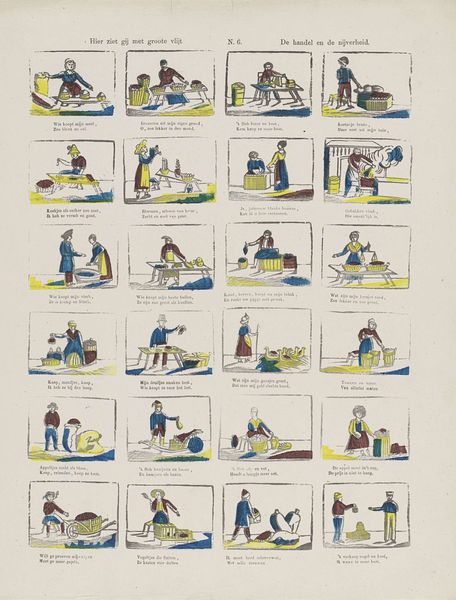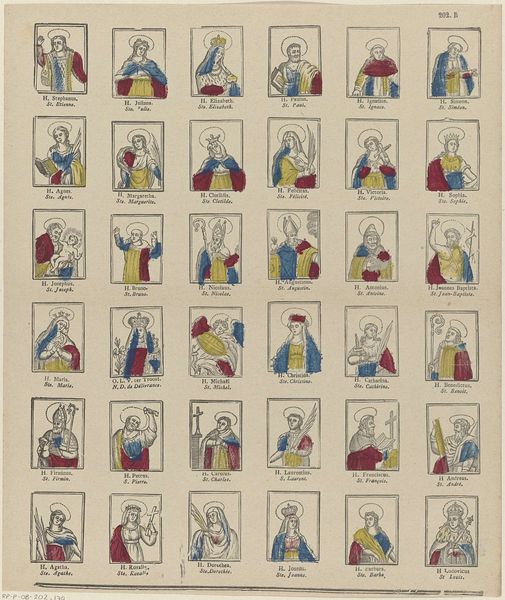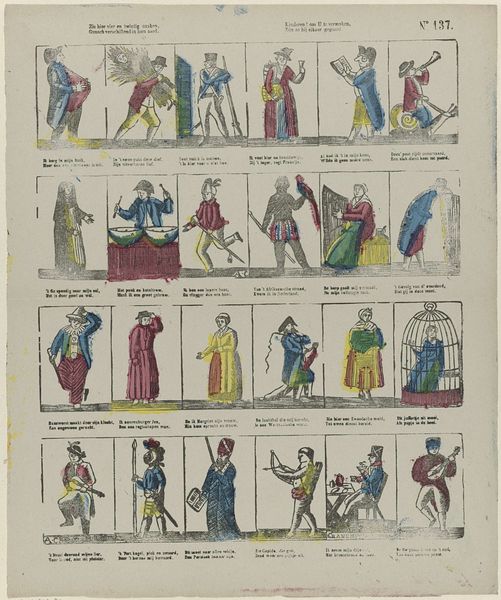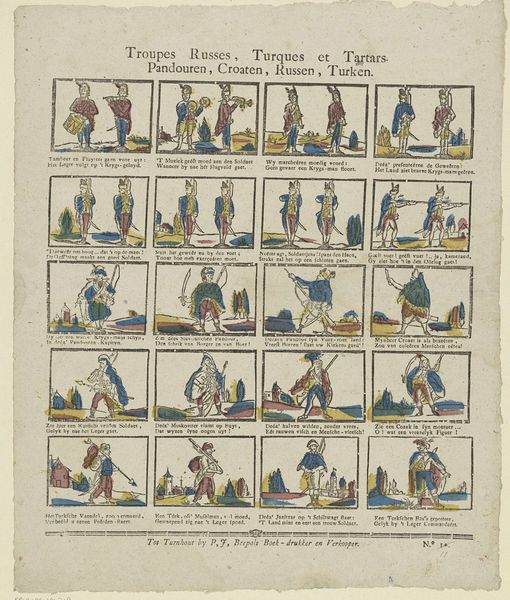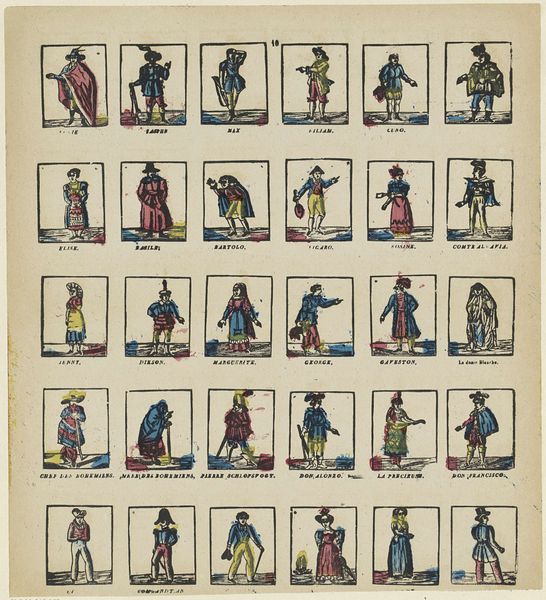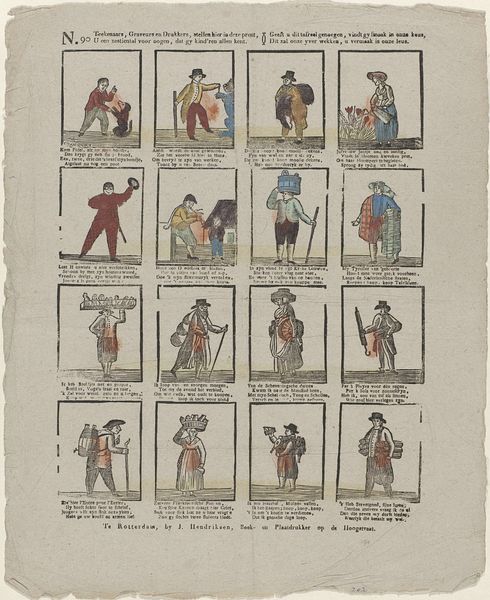
Deez' prent vertoont, U, lieve jeugd, / Een aantal helden, die hun leven, / Geld en de eer van 't land, met vreugd, / En heldenmoed ten beste geven 1827 - 1894
0:00
0:00
mhemeleersvanhouter
Rijksmuseum
print, etching, engraving
#
narrative-art
# print
#
etching
#
history-painting
#
academic-art
#
engraving
Dimensions: height 382 mm, width 317 mm
Copyright: Rijks Museum: Open Domain
Editor: This print, titled "Deez' prent vertoont, U, lieve jeugd, / Een aantal helden, die hun leven, / Geld en de eer van 't land, met vreugd, / En heldenmoed ten beste geven," dates from between 1827 and 1894 and is currently held at the Rijksmuseum. It appears to be an etching or engraving. There's almost a comic-book feel to the layout, with all the little boxes displaying different figures. What's your perspective on this piece, from a materialist lens? Curator: Given that this is a print – an engraving or etching as you said – I’m interested in how it functions within a larger system of production and consumption. Who was the intended audience, and how would this inexpensive, reproducible image be distributed? The text suggests a juvenile audience, perhaps within an educational setting. It invites questions about how it circulated as a means of instruction or even indoctrination into civic values. The uniformity suggests a mass-produced item rather than unique work of craft. What does that imply about the value placed on artistic skill? Editor: That's interesting, I hadn't considered its use as potentially educational material. I suppose the different roles each figure plays highlights the importance of each occupation. Were the materials of creation significant in determining the cost and availability of this print? Curator: Absolutely. The choice of printmaking, specifically etching or engraving, speaks to relative affordability and replicability in the period. These processes allowed for multiples to be produced far more easily and cheaply than, say, a painting. Paper quality, the number of impressions made from the plate, and even the distribution networks would have impacted its accessibility. Considering the low cost, was the audience middle class, rather than upper class? What does its status as reproducible material tell us about its intent and reception? Editor: So, it's not just about the image itself but also the context of its creation and dissemination, the materials, and even its potential audience that help us understand the artwork. Thanks! Curator: Exactly. And considering those elements helps us move past the surface-level aesthetic appreciation to understand the work's place within a broader social and economic landscape.
Comments
No comments
Be the first to comment and join the conversation on the ultimate creative platform.
